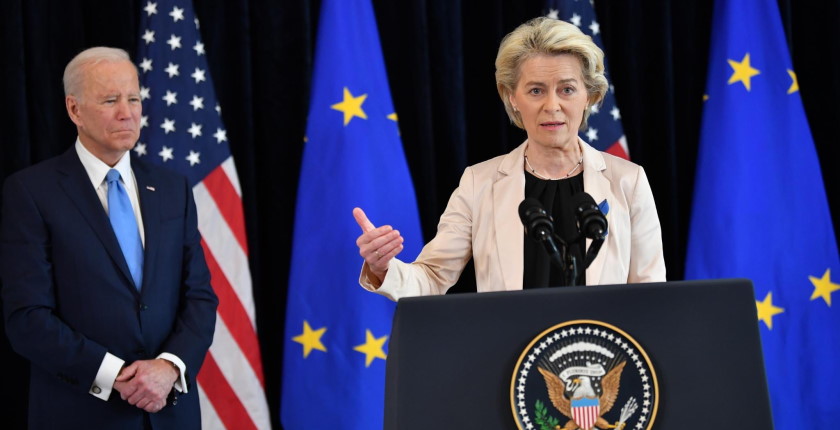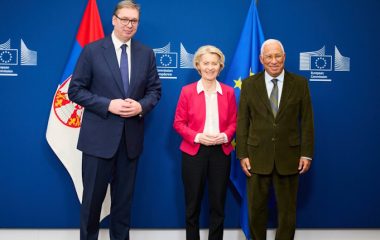
Photo: Ursula von der Leyen / Twitter
The United States said it would strive to ensure, including working with international partners, additional liquified natural gas (LNG) volumes for the EU market of at least 15 billion cubic meters in 2022. It is insufficient for European ambitions to eliminate its demand for Russian gas.
During the visit of United States President Joe Biden to Brussels, a joint statement was issued with the European Commission that the two sides would form a task force to “bolster energy security for Ukraine and the EU for next winter and the following one.”
The European Union is trying to cut imports of Russian gas, which reached 155 billion cubic meters in 2021, by two thirds this year. Germany’s share was 56 billion cubic meters.
The US said it would “strive to ensure, including working with international partners,” an increase in the supply of liquefied natural gas (LNG) to the EU market equivalent to 15 billion cubic meters of gas in 2022, “with expected increases going forward.”
The US promised it would ask other countries to provide LNG to Europe
The EU imported 22 billion cubic meters from the US last year. The European Commission added it would work with member states to ensure “stable demand for additional US LNG until at least 2030” of 50 billion cubic meters per year.
European Commission President Ursula von der Leyen clarified that the added volume would replace one third of Russian gas imports. She and Biden said the gas infrastructure in the EU would be adjusted to take in green hydrogen as well.
It remains unclear how the US could secure additional LNG in a domestic and global market bound by long-term contracts. At the same time, the EU lacks the infrastructure to regasify the fuel and distribute it to consumers.
Biden: Crisis presents opportunity
“This crisis also presents an opportunity. It’s a catalyst that will drive the investments we need to double down on our clean energy goals and accelerate progress toward our net zero emissions future,” the US president stressed. The second part of the deal is for measures to reduce Europe’s demand for gas overall, Biden said and pointed to green hydrogen and energy efficiency solutions such smart thermostats, which are used to electrify heating systems.
Earlier this month the US announced it would ban imports of Russian fuels. “We were able to take that step when others could not because the United States is a net export of energy,” Biden acknowledged.
EU counts on energy savings, renewables to urgently cut demand for Russian gas
In the joint statement, the US and European Commission committed to reducing greenhouse gas intensity of all new LNG infrastructure and associated pipelines, including through the use of clean energy to power onsite operations, the reduction of methane leakage and the construction of renewable hydrogen infrastructure.
The EU is leaning on clean energy and energy efficiency to curtail much of its gas demand. It promised to cut red tape in the energy sector, including for LNG infrastructure, and boost the deployment of renewables. The decision makers in Brussels estimate that energy savings can make up for 15.5 billion cubic meters of gas this year while that new wind and solar power plants can replace another 20 billion.
In other news, German Vice-Chancellor and Minister for Economic Affairs and Climate Action Robert Habeck said his country would cut oil imports from Russia by half by the summer.









Be the first one to comment on this article.